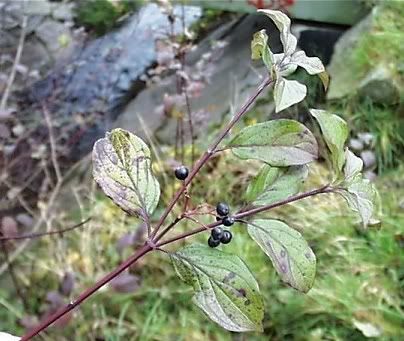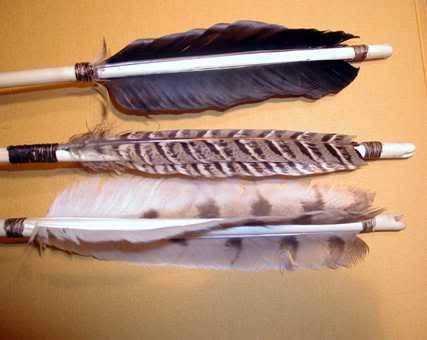Snufkin said:
It looks a little like a dogwood to me. But as Torjusg pointed out viburnum is excellent as is privet and hazel. The frenchman isn't Pierre Lansac is it? He's a member of Paleoplanet.
Snufkin is spot on. The plant is:
Common Dogwood (Cornus sanguinea)
It is believed to be native in the British Isles but is found a lot in landscape planting too these days. The linked site gives some interesting info which is relevant to the subject;
Another explanation for the common name for this species comes from one use of its coppiced shoots; they were sharpened and used by farmers as animal prods or 'dags' when herding stock.
Don't eat the berries as they are really bitter and toxic. They used to be utilised for making oil apparently and are grown as coppice for basketry as the stems are very strong and flexible. Great for making woven traps, baskets etc. They naturally grow pretty straight and true when coppiced (cut down every few years) and are easily straightened when dried which would make them perfect for arrows. I imagine the Native American Indians used to use the American species for just that too.
They are also a beautiful sight in the Winter months with their striking red stems which 'glow' in the low sun.
Other cultivars you find in landscape planting can be used too. Often you will see the yellow stemmed Cornus sericea 'Flaviramea' and blood red Cornus alba 'Sibirica' too but we use the native sanguinea mostly outside urban areas and gardens.
In France it is called variously 'Cornouiller sanguin, Sanguine, Bois-punaise and Bois-puant', . Cornus means 'hard' or durable'/ tough, and sanguinea from the Old French sanguin(e) or blood-red' which describe the stem colour

It is widely distributed throughout England and into Scotland and is often associated with older woodland or hedgerows on calcareous soils.



